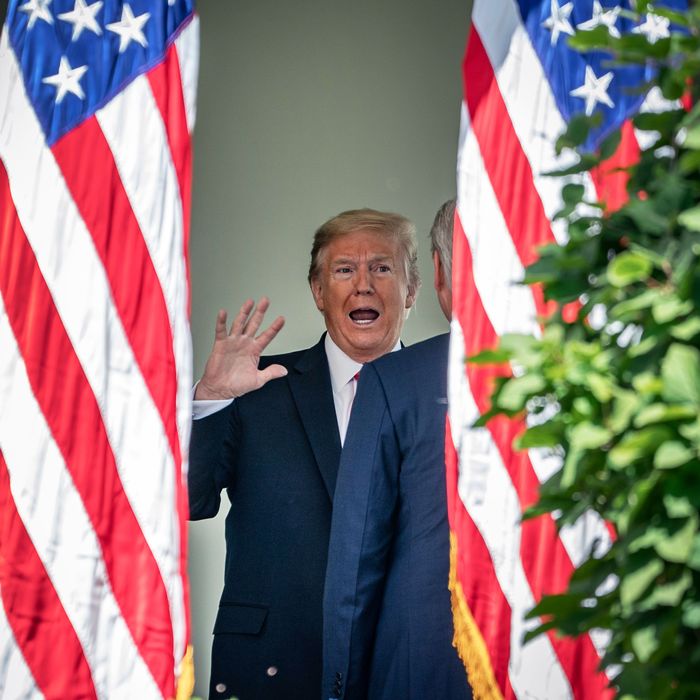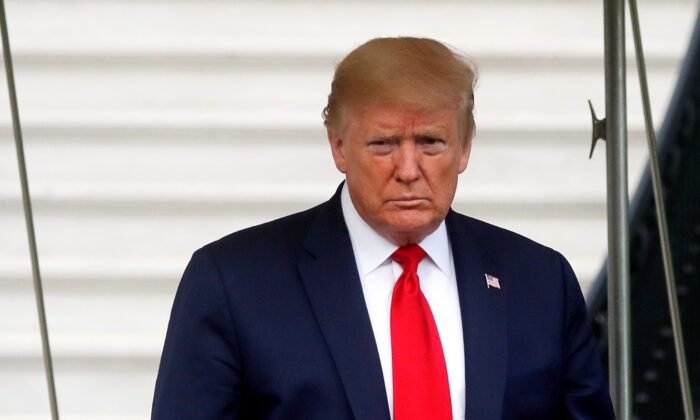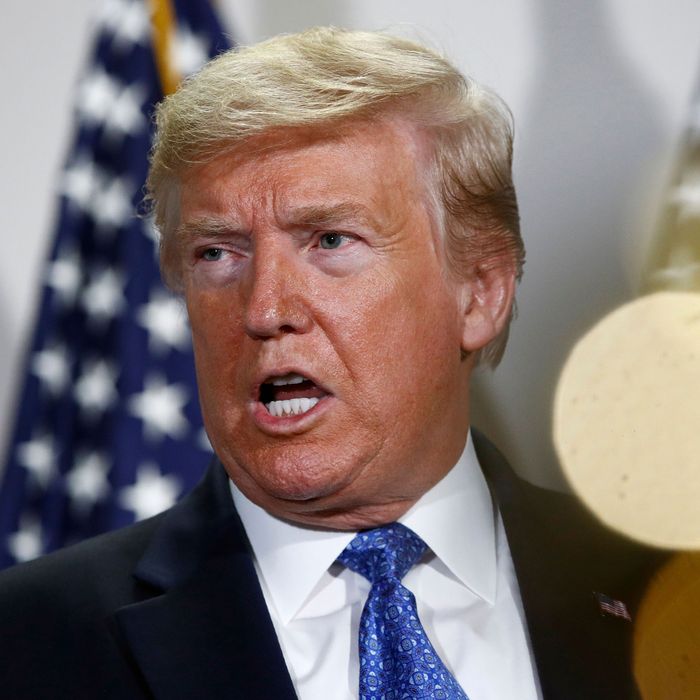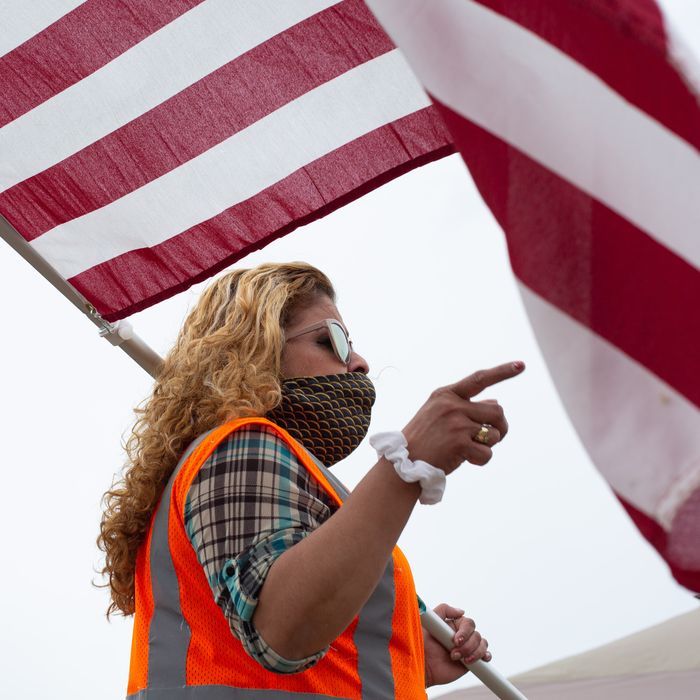Tr
President Donald Trump departs on travel to the Camp David presidential retreat from the South Lawn at the White House in Washington, on May 1, 2020. (Carlos Barria/Reuters)
State, Federal Investigators’ Bid for Trump’s Financial Records Heard by Supreme Court
The Supreme Court heard President Donald Trump’s long-awaited appeal of lower-court rulings ordering him to hand over private business papers and tax returns to investigators.
For more than three hours on May 12, six lawyers debated about Trump’s efforts to defend himself against historically unprecedented subpoenas from federal lawmakers and a local prosecutor in New York City against the head of the executive branch. The president sued several banks and an accounting firm he has patronized to prevent access to the documentation.
Trump claims those records are temporarily privileged while he is in office, he has done nothing wrong, and inquiries are politically motivated fishing expeditions that his political enemies are gambling will uncover past wrongdoing.
“The subpoenas at issue here are unprecedented in every sense,” Trump lawyer Patrick Strawbridge told the court during the first of two rounds of oral arguments.
“Before these cases, no court had ever upheld the use of Congress’s subpoena power to demand the personal records of a sitting president, and no committee of Congress had even tried to compel production of such a broad swath of the president’s personal papers, let alone for the stated purpose of considering potential legislation.”
The day’s sitting was divided into two distinct sets of oral arguments conducted telephonically and simultaneously broadcast to the public.
The first, which consisted of the consolidated cases of Trump v. Mazars and Trump v. Deutsche Bank AG, concerned the Democrat-controlled House Committee on Oversight and Reform, which issued a subpoena to Trump’s accountant and several of his business entities. The committee wants private financial records that belong to Trump.
The U.S. Court of Appeals for the District of Columbia Circuit ruled the subpoena had a legitimate legislative purpose and was within the statutory authority of the committee. Trump’s position is that the committee has no such authority.
The second consisted of Trump v. Vance, which stems from a criminal investigation conducted by Manhattan District Attorney Cyrus Vance Jr.
Vance’s office has been looking into the role Trump and his business, The Trump Organization, may have played in alleged hush-money payments made to Stormy Daniels, a pornographic movie actress who claimed during the 2016 election cycle that she had an affair with Trump. Trump denies the affair. Federal prosecutors dropped their investigation into the matter, but Vance claims Trump may have broken state laws.
Former Trump attorney Michael D. Cohen reportedly paid money to Daniels to prevent her from speaking publicly about the alleged relationship and was reimbursed by Trump and his company. Cohen was sentenced in 2018 to three years in prison for violating federal campaign finance laws.
As part of an investigation, Vance served a grand-jury subpoena on the accounting firm, Mazars USA, demanding a wide swath of business documents, including financial papers and eight years of Trump’s personal and corporate tax returns. According to documents filed with the Supreme Court, the New York subpoena is a nearly verbatim copy of subpoenas issued by committees of Congress for the same papers.
The 2nd Circuit Court of Appeals rejected the president’s claim of immunity and ordered him to comply with the subpoena. Trump’s position is that the subpoena violates Article 2 and the supremacy clause of the U.S. Constitution.
Vance’s office previously countered that Trump is asserting a novel presidential “tax return privilege” on the theory “that disclosing information in a tax return will necessarily reveal information that will somehow impede the functioning of a president.”
Jay Sekulow, Trump’s attorney in the New York case, echoed Strawbridge.
“No county district attorney in our nation’s history has issued criminal process against a sitting president of the United States, and for good reason. The Constitution does not allow it.”
If the 2nd Circuit’s ruling isn’t reversed, “the decision weaponizes 2,300 local DAs,” allowing them “to harass, distract, and interfere with the sitting president,” Sekulow said.
Justice Clarence Thomas asked Principal Deputy Solicitor General Jeffrey Wall, who appeared in support of Trump, a hypothetical about investigators’ possible ulterior motives.
“What if it was clear from those statements that you reviewed that their intention was actually to remove the president from office rather than … that it is for … pre-textual legislative reasons?”
Wall said the U.S. House of Representatives, which is supposed to investigate as part of the lawmaking process, has made little effort to justify its actions in the case.
If you look “at what they actually say about their intended legislative proposals and then why they need the document, it’s paper-thin. They don’t give you any specifics on what they’re thinking about doing or any specifics on why they need the documents.”
“The House has never really tried to substantiate why it needs these documents in service of its legislative powers,” Wall added.
Justice Elena Kagan told Wall that his legal brief failed to “make a case as to why these particular subpoenas place a particular burden on the president such that he will be prevented from carrying out his constitutional responsibilities.”
Wall denied that and said that the House was limited in what it could do.
The lower courts said the House “probably … could not draw the blood of the president or read his teenage diary. The power that they are seeking and the burden they will impose in the aggregate on the president will, I think, reshape and transform the balance of the separation of powers. So, yes, we are saying that these subpoenas, and certainly these subpoenas taken in the aggregate, once the House has this weapon, will harm and undermine the presidency of the United States, not just this president, the institution of the presidency going forward.”
Justice Samuel Alito suggested to Douglas Letter, general counsel to the House, that he saw no practical limits to the congressional subpoena power.
“That’s correct because this court itself has said Congress’s power … to legislate is extremely broad, especially when you take into account appropriations,” Letter replied.
“So the end result is that there is no protection whatsoever,” Alito said.
Chief Justice John Roberts also told Letter: “Your test is not really much of a test. It’s not really a limit.”
Justice Ruth Bader Ginsburg seemed more sympathetic to the House’s position, suggesting it may need to revamp some laws.
She pointed out that under the Ethics in Government Act, “Congress may decide that it needs to beef up that legislation … It may also decide that for financial disclosure purposes, there should be disclosure of tax returns.”
Is Failing at Governing But Winning at Authoritarianism

Photo: Drew Angerer/Getty Images
Donald Trump has been battering away at American democracy for about four years now, first as a populist candidate warning of rigged elections and inciting his supporters to violence, and then as a president. Scholars who study democratic erosion — the process through which populist leaders hollow out previously healthy republics — have shown steady, if not increasing, concern.
Ross Douthat has been one of the most effective and articulate critics of those warnings. Douthat’s Trump is little more than a clown, who may dream of the jackboot but who has been reduced instead to ineffectually stamping his loafers. Douthat’s latest column, “Donald Trump Doesn’t Want Authority,” oversimplifies his thesis only slightly. While acknowledging that Trump’s misgoverning has had tragic effects, he reiterates his portrayal of a president too hapless to do any real damage to the democratic system.
Douthat has one point. Even a reasonably effective leader of Trump’s authoritarian bent could have exploited this crisis more effectively. The pandemic produced a worldwide upsurge in trust for leaders — in almost every state, governors have enjoyed soaring approval ratings, as have leaders across the globe, some of them inept. Only Trump’s ineptitude was so obvious, playing out in buffoonish daily briefings, that he was denied the upsurge that almost every other leader enjoyed. Even a barely competent version of Trump would now be sitting on a commanding lead.
But effective public management and effective attacks on democratic norms are different skills. Douthat undersells the very real success Trump has had in the latter area. Trump has not “suddenly discovered how to use his authority for dictatorial or democracy-defying purpose,” he asserts.
Well no, perhaps not “suddenly.” He has instead worked his way there through trial and error. But Trump’s progress after three years is undeniable.
Trump’s first success came immediately: He disabled the norms walling off presidents from private interests. Restraints that were once so strong that Jimmy Carter had to sell off his peanut farm lest any pro-peanut bias infect his decision-making have essentially disappeared altogether. The entire Republican congressional party, and much of its judicial wing, have lined up behind Trump’s claim that he doesn’t need to even disclose his financial interests, let alone cut them loose. Conservatives literally use “Emoluments Clause” as a punchline — after all, it was never enforced before, since nobody until Trump bothered violating it. Just about the only small price Trump pays any more is regular stories by David Fahrenholdt detailing the government overpaying at his properties.
He has likewise disabled congressional oversight. Where previous presidents skirmished over the boundaries and extent of Congress’s authority to probe their administrations, Trump has dismissed it wholesale. The fact that Congress has political rivalries with the executive — the very dynamic the Founders intentionally counted on to restrain overreach by any branch of government — is, for Trump, proof that competing branches have no legitimacy. “These aren’t, like, impartial people. The Democrats are trying to win 2020,” he said, by way of explaining his blanket refusal to respect any subpoena.
His apparently successful purge of inspectors general has stripped away yet another layer of accountability. It has met the usual response from the GOP: initial scolding from a couple members, followed by silence, followed by a chorus of approval. “He is certainly within his authority. He gets to hire and fire under the Constitution all people in the executive branch,” said Mitch McConnell, laying out the party line.
The problem, of course, is that the president’s formal authority is terrifyingly vast. The Saturday Night Massacre was within the president’s formal authority. So is replacing the Justice Department with pure partisan loyalists who harass his rivals and protect his allies. That is why a system of norms was built to restrain that authority in the first place.
William Barr’s reign at the Justice Department has been the most effective fulfillment of Trump’s ambitions. Trump’s impulsiveness has certainly impaired Barr’s work by making the ruse so obvious, a fact that Barr has even had to complain about loudly. It’s now forgotten, but three months ago, Barr threatened to quit if Trump wouldn’t stop tweeting out demands that the Justice Department become a weapon of vengeance.
Trump hasn’t stopped, and Barr hasn’t quit. He continues to patiently lay the predicate to criminalize all of Trump’s Deep State enemies, and to exonerate his allies. Paul Manafort has skipped to the front of the line and had his sentence reduced to “home confinement” (i.e., what most of us are doing these days anyway). The prosecutors of Roger Stone and Michael Flynn have quit after Barr undercut them, and even if Barr’s maneuvers fail, both will likely win pardons. The message sent across the bureaucracy is crystal clear.
The most dangerous elements of Trump’s anti-democratic agenda are as-yet-unexploded ordnance, which may over time prove either terrifying or meaningless. His regular incitements to violence, goading his “tough” supporters in the military, police, and biker gangs to finally take off the gloves, have not yet produced a republic-shaking tragedy. And his embrace of Republican vote-suppression logic — he is now threatening to withhold funds from states that allow absentee voting — may, or may not, prevent a free and fair election. These actions are democratic tail risks. Like abolishing the pandemic response team, they’re quickly denounced and quickly forgotten, because they probably won’t matter in the end — unless they do matter, in which case their effect will be catastrophic.
When Douthat isn’t skipping over these behaviors, he is minimizing them as mere desperation for attention. His clever formulation presents attention as a category inherently distinct from power: “Great men and bad men alike seek attention as a means of getting power,” he writes, “but our president is interested in power only as a means of getting attention.”
Rather than calling this “attention,” it would be more accurate to say Trump is obsessed with propaganda. His larger abuses of power are designed for this end: Barr’s purpose is to let Trump depict as many as possible of his foes as criminals. Nobody is really going to get locked up in the end. They will merely suffer Hillary Clinton’s fate of death by innuendo.
Propaganda was the point of Trump’s almost-successful scheme to pressure Ukraine into announcing an investigation of Joe Biden. It is the point of such petty maneuvers as putting Trump’s name on economic-relief checks, or turning the military into a campaign prop, or extorting governors to give him praise that he can use in campaign ads as the price of protection for their states against the coronavirus.
Trump may have begun his presidency by merely raging impotently at critical news coverage, but over time he has figured out some useful pressure points to bring his antagonists to heel. He constantly cites CNN’s parent company when attacking its news coverage. He has punished the Washington Post’s owner by withdrawing a $10 billion Pentagon contract. He has raged against social-media companies, calling their political orientation “illegal.” (“The Radical Left is in total command & control of Facebook, Instagram, Twitter and Google. The Administration is working to remedy this illegal situation.”)
The owners of all these firms understand perfectly well what they can do to make their antitrust and contracting problems with Trump’s government disappear. Whatever their current calculus may be on placating Trump’s demand to amplify his propaganda, it will look different should he win a second term.
It is true that Trump has frequently undercut his ambitions with his ineptitude. Shortly before the pandemic arrived in the United States, conservative economist Tyler Cowen coined a phrase to describe the future of American libertarianism. The phrase he came up with was “State-capacity Libertarianism.” He sketched out a worldview that was skeptical of redistribution, hostile to “the polarizing left,” (hence the libertarian part) but eager to expand the government’s ability to efficiently manage infrastructure, control climate change, and other public goods. He gave a nod to the influence of Trumpist libertarian Peter Thiel.
Trump has delivered in spades on the hostility to the left and to redistribution. (One suspects these are the core demands for most libertarians — certainly they are for Thiel.) The state capacity, not so much. The actual governing synthesis Trump has produced could be called “State Incapacity Authoritarianism.”
State Incapacity Authoritarianism, like its inverse, sounds a bit like an oxymoron. But in practice, the pieces fit together well enough. Its key constituents get out of it the things they want most. Trump and his cronies get looting. The business class gets lavish tax cuts and self-regulation. Republican believers get to humiliate and defy the liberals.
You can dismiss it all as lacking “authority,” and you might be right. But the truth about authoritarians is that, while they usually promise to make the trains run on time, they often fail to deliver. Making the failure not matter is the point of it.


